starliner
Latest
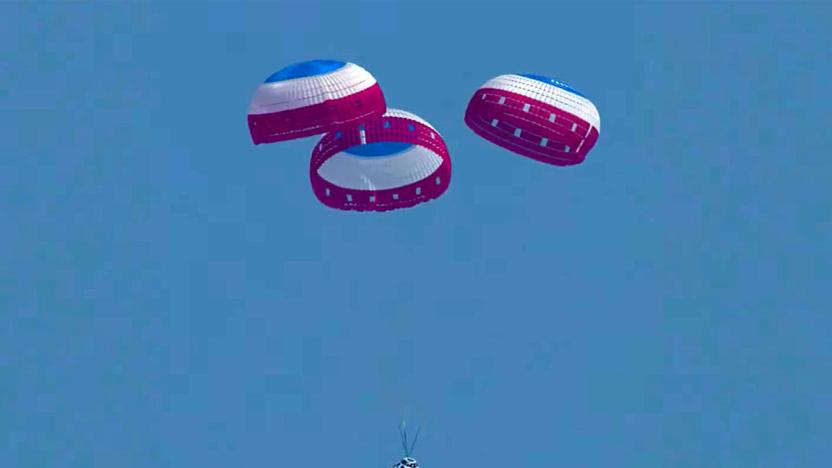
Boeing's Starliner completes its final landing parachute system test
Having fallen from a height of 35,000 feet and landed safely in the New Mexico desert, Boeing’s Starliner space capsule successfully completed its parachute balloon drop test on Monday, clearing the way for crewed test flights. Unlike SpaceX’s Dragon capsule, which uses parachutes to slow it for water landings, the Starliner employs a multi-stage system of parachutes and airbags to cushion its landings on solid ground. According to Boing, the Starliner is actually the first American-made lander designed to land on land.
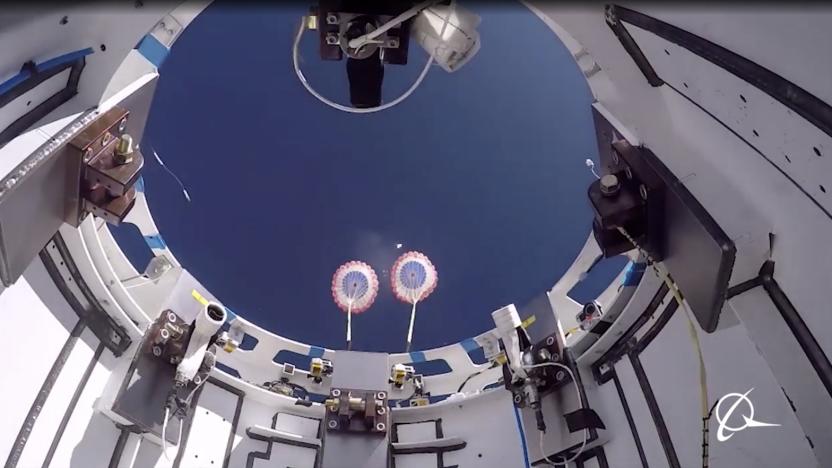
Boeing successfully tests Starliner's parachutes ahead of second flight attempt
Boeing has a lot to prove before Starliner can make its second attempt to reach the ISS. One of the tests it has recently conducted focused on parachute reliability — in particular, the company wanted validate that the vehicle’s parachute system can deploy under an adverse set of environmental factors. The aerospace giant’s main objective was to ensure that the parachutes would inflate correctly even if an abort occurs early into launch.
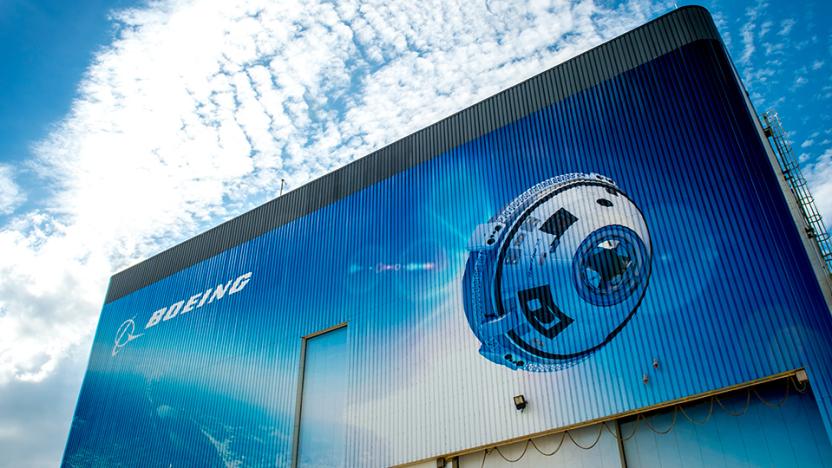
Boeing will send Starliner on another uncrewed test flight
Boeing will fly another uncrewed Starliner flight after the first one failed.
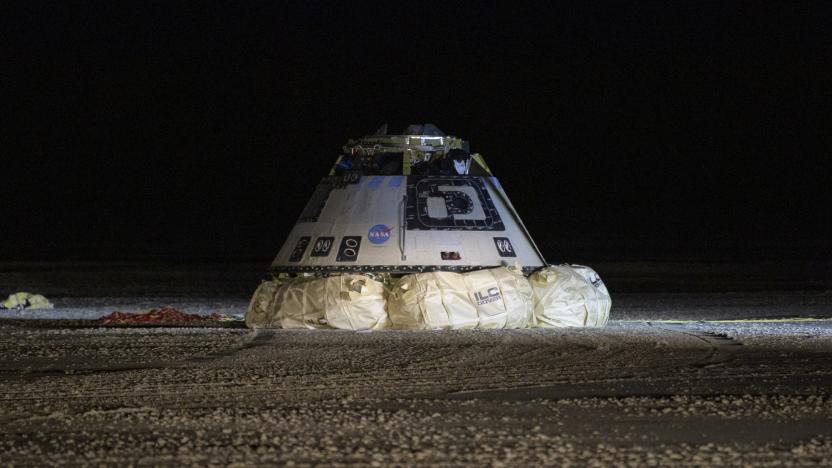
NASA wants to review Boeing’s Starliner work after setbacks
Boeing just can't catch a break. Currently amid a lengthy controversy surrounding the company's grounded 737 Max aircraft, the aerospace manufacturer is now facing scrutiny from NASA. Boeing's CST-100 Starliner crew capsule was supposed to dock with the International Space Station during its inaugural test flight in December. However, a software error prevented the craft from reaching the correct orbit. Now, a second -- and more dangerous -- glitch has been uncovered. According to SpaceNews, NASA Aerospace Safety Advisory Panel member Paul Hill said, "...if it had gone uncorrected, it would have led to erroneous thruster firings and uncontrolled motion...with the potential for a catastrophic spacecraft failure," during a teleconference. Boeing and NASA were hoping to follow up December's test with a manned flight, but after finding multiple problems with Boeing's work, the space agency is calling for a review of the company's software verification processes before proceeding.
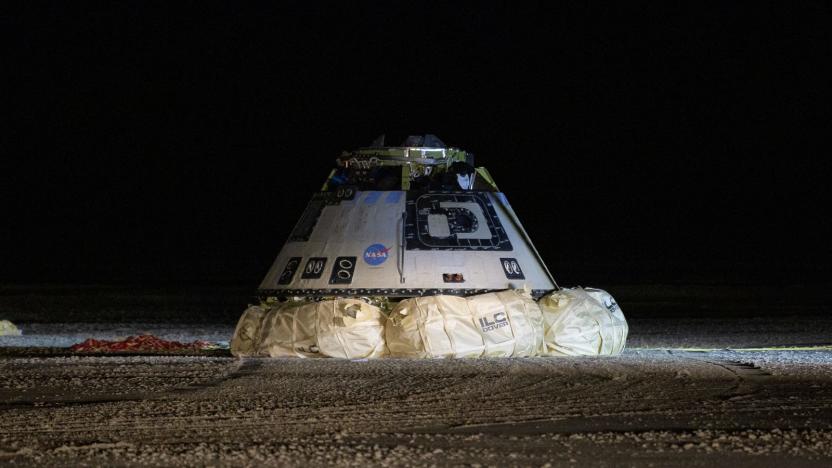
Boeing Starliner is the first US-made crew capsule to land on the ground
The inaugural Starliner test flight didn't go according to plan, but it still made a little bit of history. Boeing's spacecraft landed safely at New Mexico's White Sands Missile Range at 7:58AM Eastern, making it the first US-made, crew-ready capsule to touch down on solid ground. Previous capsules from the Mercury, Gemini and Apollo programs all landed in the sea. This capsule didn't have any humans aboard (the test dummy Rosie doesn't count), but this is still a watershed moment.
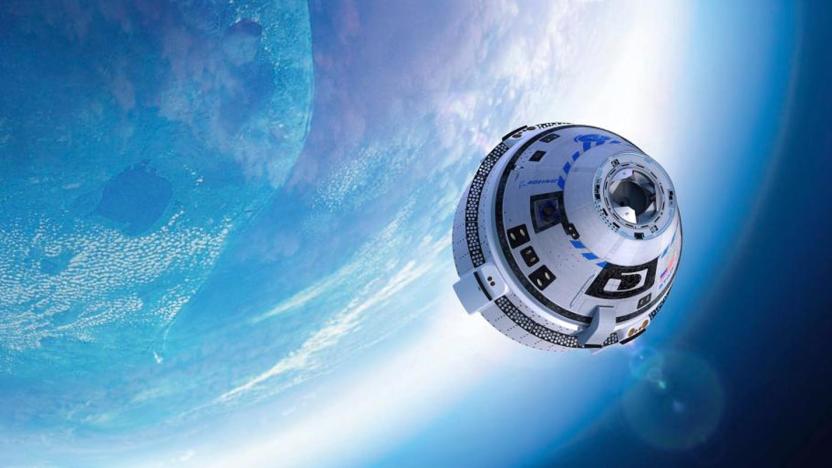
Watch Boeing's Starliner attempt a landing starting at 6:45AM ET
Boeing's Starliner fell short of the main goal for its inaugural test flight, but the company and NASA are hoping to end the mission on a better note. They've committed to a landing attempt for the (currently uncrewed) capsule on December 22nd, with coverage starting on NASA TV (below) at 6:45AM Eastern. The deorbit burn is due to start at 7:23AM, while touchdown will take place at 7:57AM if all goes according to plan.

Boeing’s Starliner will not reach the ISS in its first test flight
Early this morning, Boeing launched the Starliner capsule for its first uncrewed test flight. Unfortunately, things did not go as planned and while the Starliner made it into orbit, it did not achieve the correct orbit.

Watch Boeing's Starliner test launch at 6:36AM ET
Last year around this time we talked about all of the delays going into the new space race between SpaceX and Boeing, who are competing to build a new spaceflight system that NASA can use to take astronauts to the ISS. Since then, SpaceX successfully sent its Crew Dragon on an uncrewed test flight in March, and this morning Boeing will attempt to do the same with its CST-100 Starliner vehicle. The two companies were chosen as candidates to build NASA's "space taxi" in the Commercial Crew Program back in 2012, with the chance to secure billions in funding. Despite a number of delays, today appears to be the day we'll see the CST-100 in action on a mission to perform a number of test maneuvers and show its ability to dock with the ISS. Like SpaceX's flight, this mission is uncrewed, however the anthropometric test device "Rosie" will be along for the ride to collect data.
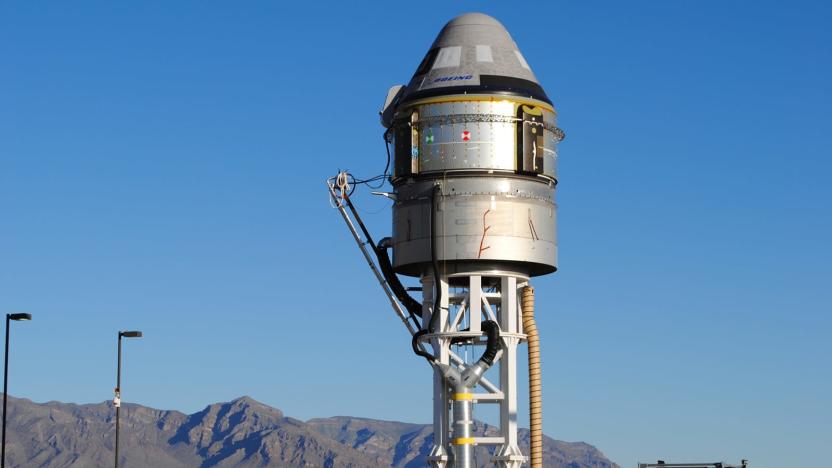
Watch Boeing's Starliner capsule launch abort test at 9AM ET
Boeing's CST-100 Starliner capsule is about to take a step closer toward taking people to orbit, and you can watch this step unfold first-hand. NASA and Boeing are streaming live coverage of the Starliner's pad abort test on November 4th at 9AM Eastern. Like similar tests, the New Mexico dry run will verify whether the vessel can safely jettison itself (and importantly, astronauts) away from its host rocket if there's an emergency before liftoff. The four launch abort engines and control thrusters will lift the spacecraft roughly a mile above the ground and a mile north of the test platform.
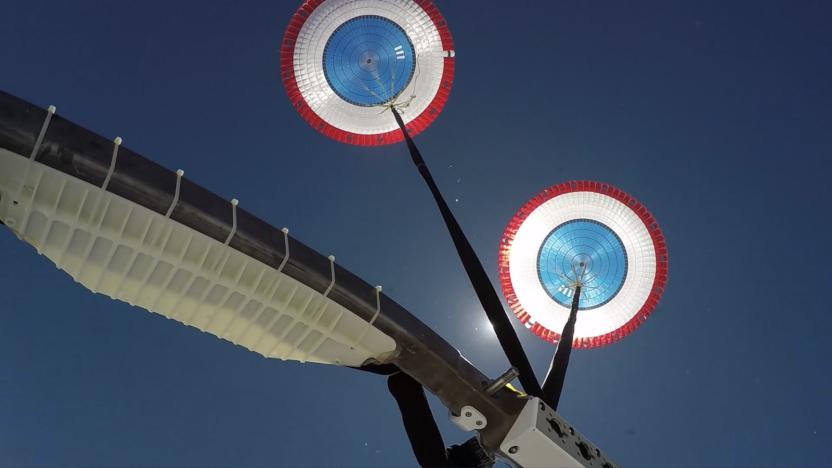
Boeing is closer to ISS spaceflights after Starliner's final parachute test
Boeing's Starliner capsule has successfully touched down at the US Army's White Sands Missile Range even though it didn't deploy all of its parachutes. The company had to disable two of its over half a dozen parachutes, so it can pass the final and most difficult qualification test it needed to go through to be able to fly astronauts to the ISS. One of the reasons why the Government Accountability Office expects further delays to the Commercial Crew program is because Boeing still needs to conduct some parachute tests. This most recent success could mean Starliner's first flight could truly happen sometime this summer, like the company is hoping.
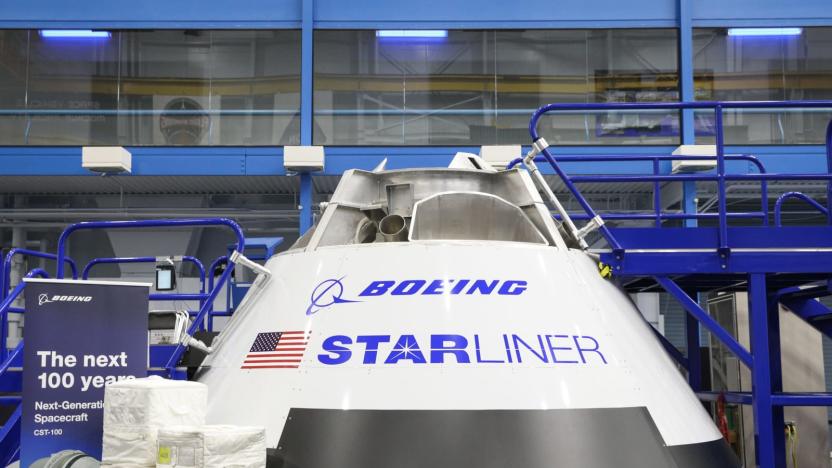
Boeing shows off its Starliner's latest parachute test
As SpaceX and Boeing continue with their commercial crew space race, Boeing posted this video showing a test of the parachutes on its Starliner vehicle. The plan is for the crew to parachute down in the American southwest after departing the ISS aboard Boeing's spacecraft, and keep it in good enough shape to be reused up to ten times. We've seen video of similar tests for the SpaceX Dragon capsule, and even close-up images of the Starliner crashing down on its airbags. The spacecraft's first uncrewed flight test has been pushed back repeatedly and is now on the schedule for August -- while we hope we never see these features deployed, they're important to test before anyone actually takes a ride in the thing.
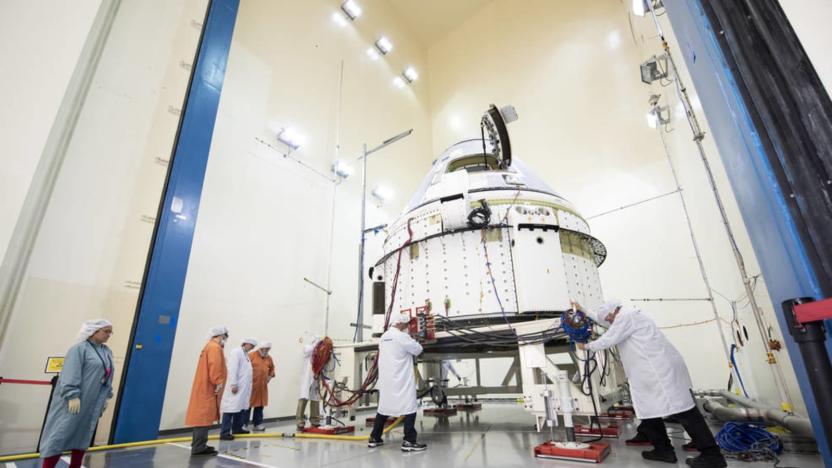
Boeing delays its first Starliner test flight until August
For a while, Boeing and SpaceX have been neck-and-neck in their race to provide the first commercial space travel. That might be changing, as NASA and Boeing announced they'll delay the first uncrewed flight test of Boeing's Starliner. The spacecraft will now launch in August -- a full year after it was first scheduled to takeoff.

Boeing delays first crewed spacecraft test to mid-2019
On a media phone call this week, John Mulholland, who oversees NASA's commercial crew program at Boeing, revised the dates for the first uncrewed and crewed tests of the Starliner capsule, according to Ars Technica. The uncrewed test will be sometime in late 2018. The crewed test won't take place until mid-2019. It was previously scheduled for the end of this year.

The new space race is postponed until 2018
Aboard the International Space Station, an A4-size flag of the United States hangs next to a 1:100 model of a space shuttle. The memento, placed there by the last crew to fly on shuttle Atlantis, is meant to be retrieved by the next batch of astronauts that launches on a US spacecraft. NASA had hoped to reach that goal in 2017 after awarding Boeing and SpaceX billion-dollar contracts under the Commercial Crew Program (CCP). However, the road back to manned missions is paved with thorns and technical challenges. We certainly won't see any astronauts ferried to Low Earth Orbit before the year ends, but both companies believe that 2018 is the year that flag will be returned to Earth.

Boeing's Starliner space taxi will have over 600 3D-printed parts
Boeing may have pushed the Starliner's first trip to the ISS back to 2018, but we're sure to get more details about the space taxi between now and then. Reuters reports the spacecraft will pack more than 600 3D-printed parts thanks to Boeing's recent deal with Oxford Performance Materials. Printed with a plastic called PEKK, the parts are expected to perform well under the stress of spaceflight and extreme temperatures.

ICYMI: Boeing's swanky new space suits and 3D-printable skin
Today on In Case You Missed It: Boeing debuted its next-generation flight suit that astronauts will be wearing aboard its Starliner CST-100 when the spacecraft takes off in 2018. They're cooler, lighter and far more fashionable than the ones US Shuttle crews had to wear into space. Plus, who doesn't want to look like Benny the blue LEGO space guy? That's not all, a team of Spanish researchers have announced that they can now "print" human skin from their prototype 3D bioprinter. Simple culture some cells, feed them into the printer and this thing will spit out functional human skin. If only this technology were around in 1990, Liam Neeson wouldn't have had to go and kill all those folks who burned him alive. And finally, we got your TL;DR right here, folks. As always, please share any interesting tech or science videos you find by using the #ICYMI hashtag on Twitter for @mskerryd.

Boeing's spacesuit is light, cool and flexible
Virgin isn't the only company determined to make conventional spacesuits seem like ungainly beasts. Boeing has unveiled the spacesuit it wants to use for people aboard its Starliner CST-100 vessels, and they promise to be far more livable than the clunky spacewear you've seen before. It's roughly 40 percent lighter than previous suits, with layers that should keep astronauts cooler than usual. Wearers also won't feel quite so trapped or claustrophobic -- zippers help them transition from sitting to standing, and there's a wide plastic visor that should improve peripheral vision.

SpaceX delays first manned Dragon capsule launch until 2018
Elon Musk's plan to put a human crew in space using a Dragon capsule won't happen in 2017 after all. Although SpaceX was scheduled to launch a manned NASA mission next year, that mission has now been delayed until 2018 while Musk's company continues to evaluate its Falcon 9 rocket fueling system.

Boeing pushes space taxi's first ISS mission to late 2018
Boeing's CS-100 Starliner won't be ferrying astronauts to the ISS until December 2018 (or maybe even later), according to Aviation Week. The aerospace corp was supposed to help end NASA's dependence on Russia's Soyuz rockets by 2017, but it announced in May this year that its space taxi won't be ready until mid-2018. Unfortunately, Boeing has no choice but to delay that historic flight even further due to a handful of manufacturing issues.

Boeing simulates worst-case scenarios for space taxi landing
Boeing ran into some issues that ended up delaying its space taxi's debut until 2018, but it never stopped preparing for the time it has to begin ferrying astronauts to the ISS. The aerospace company has actually just kicked off a series of ground landing tests, which simulate different scenarios its Starliner spacecraft and the crew inside could experience on their return trip. Boeing test engineer Preston Ferguson said they're creating the worst possible landing angles and velocities at NASA's Langley Research Center to make sure Starliner can handle them.







